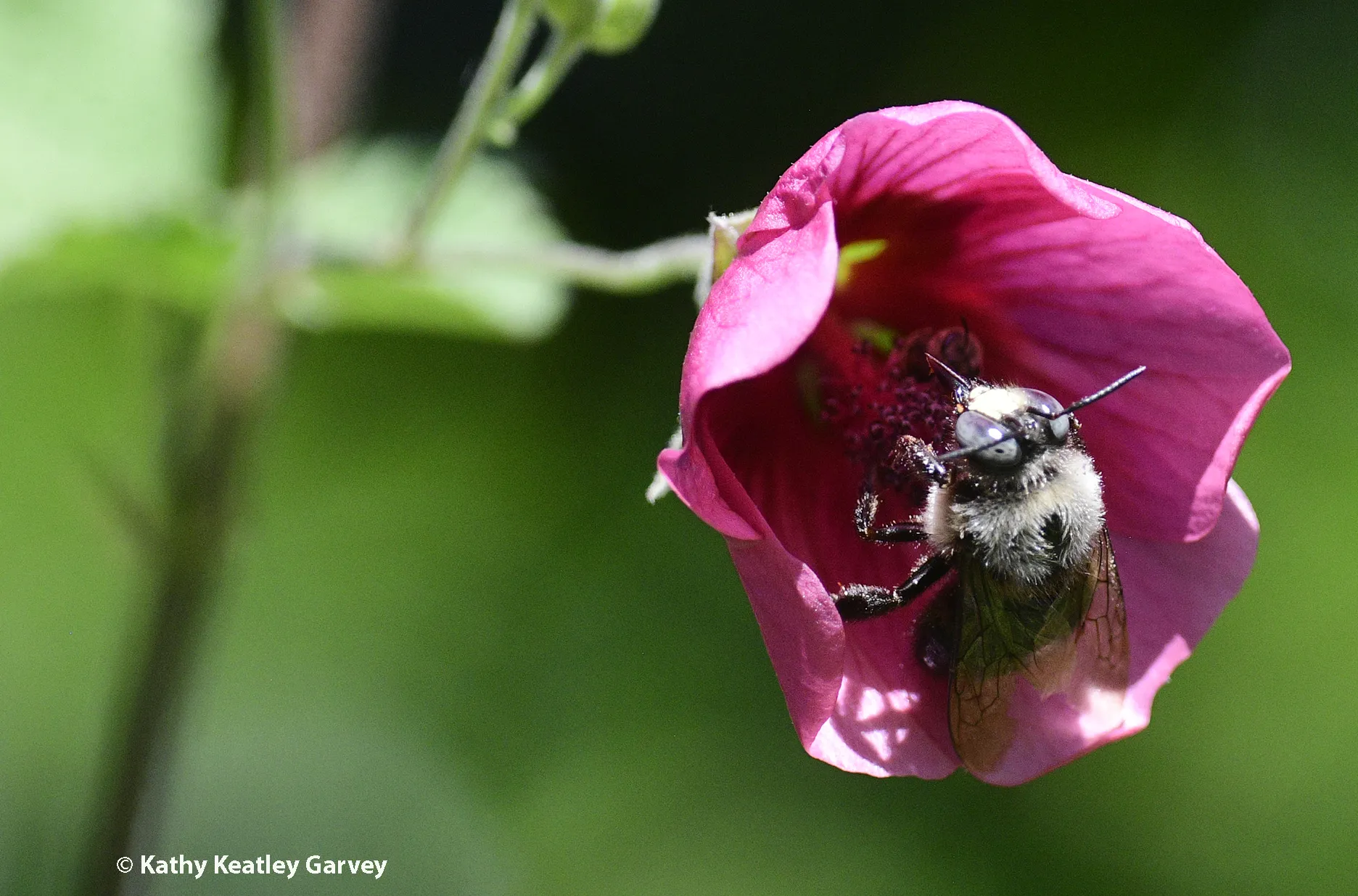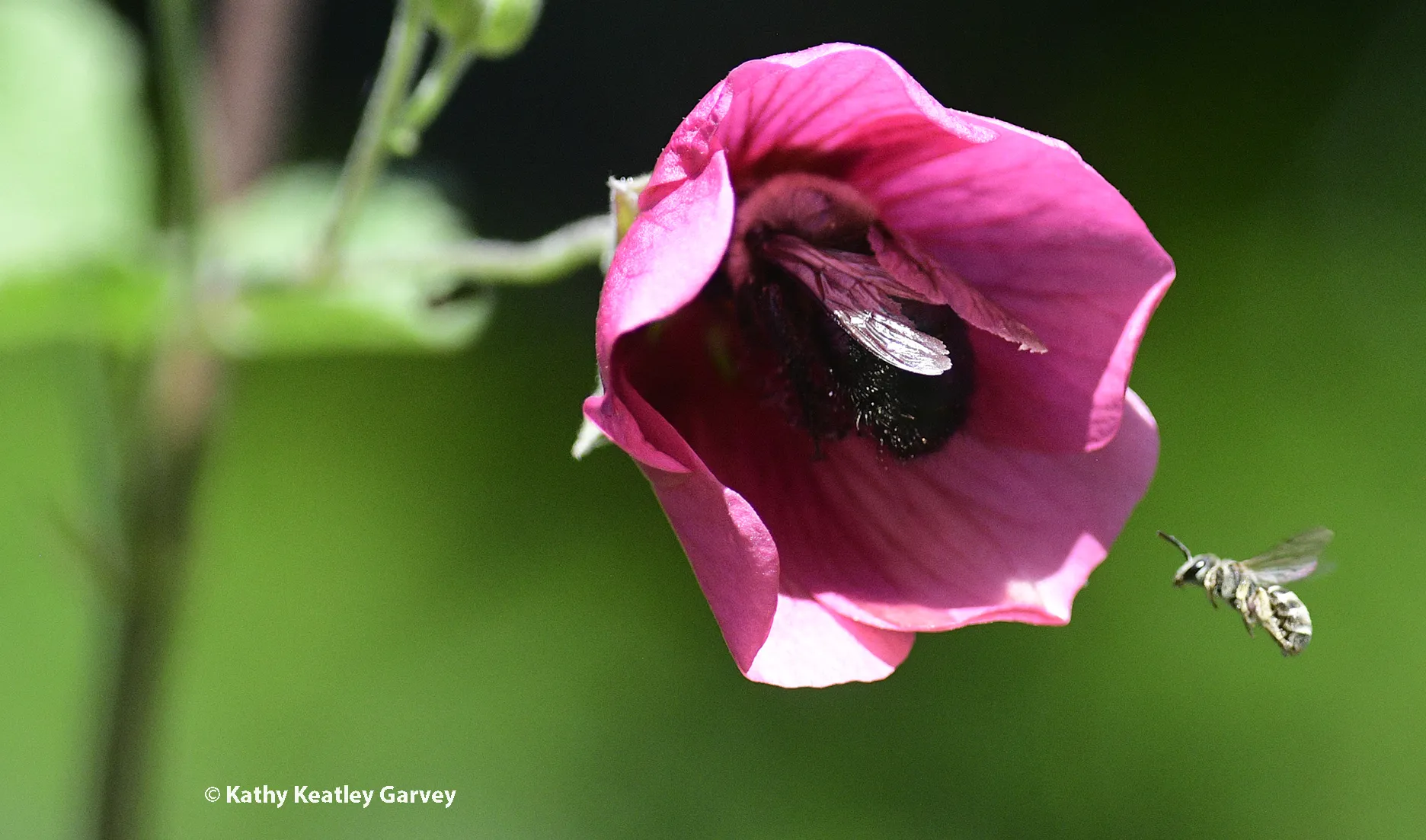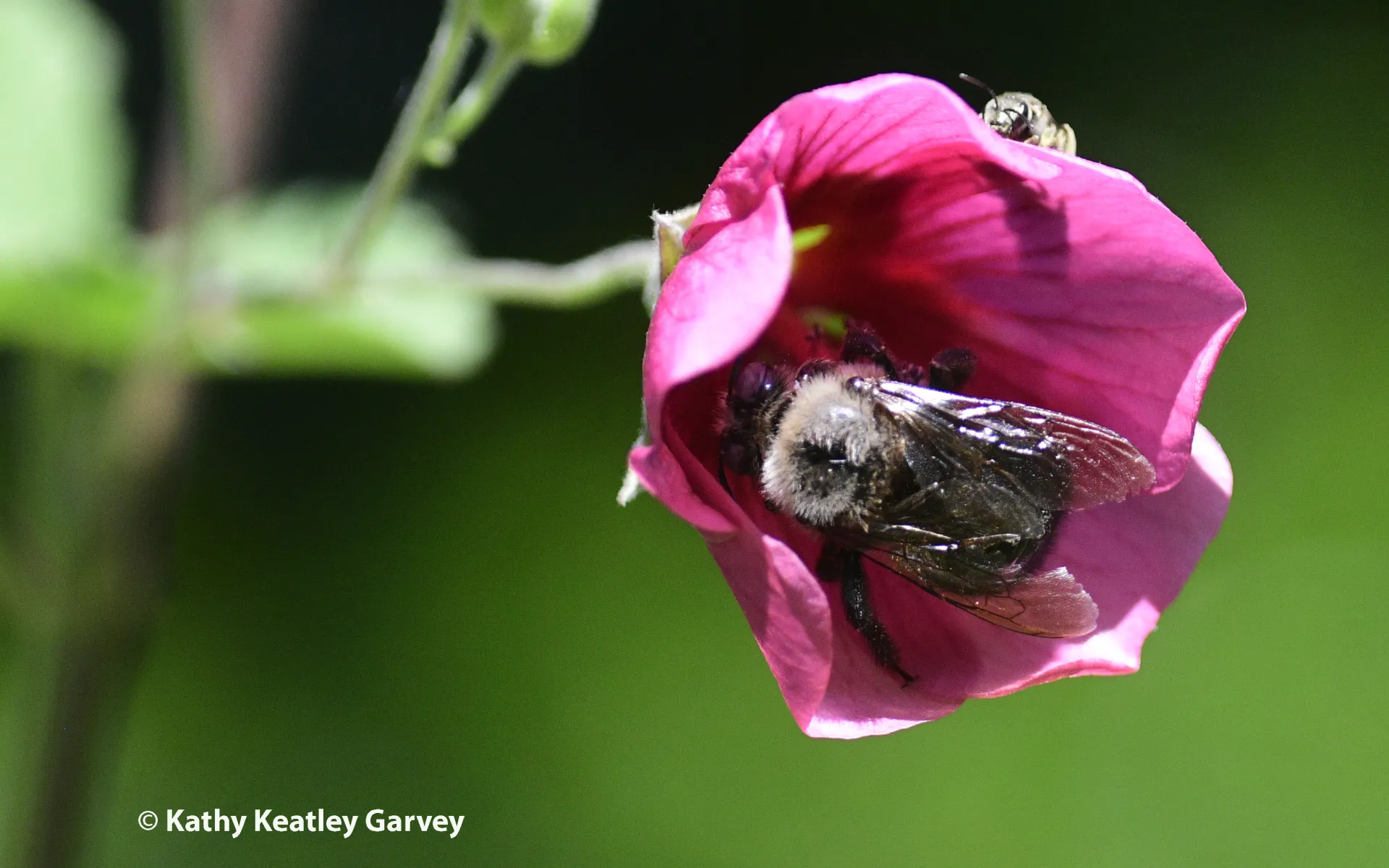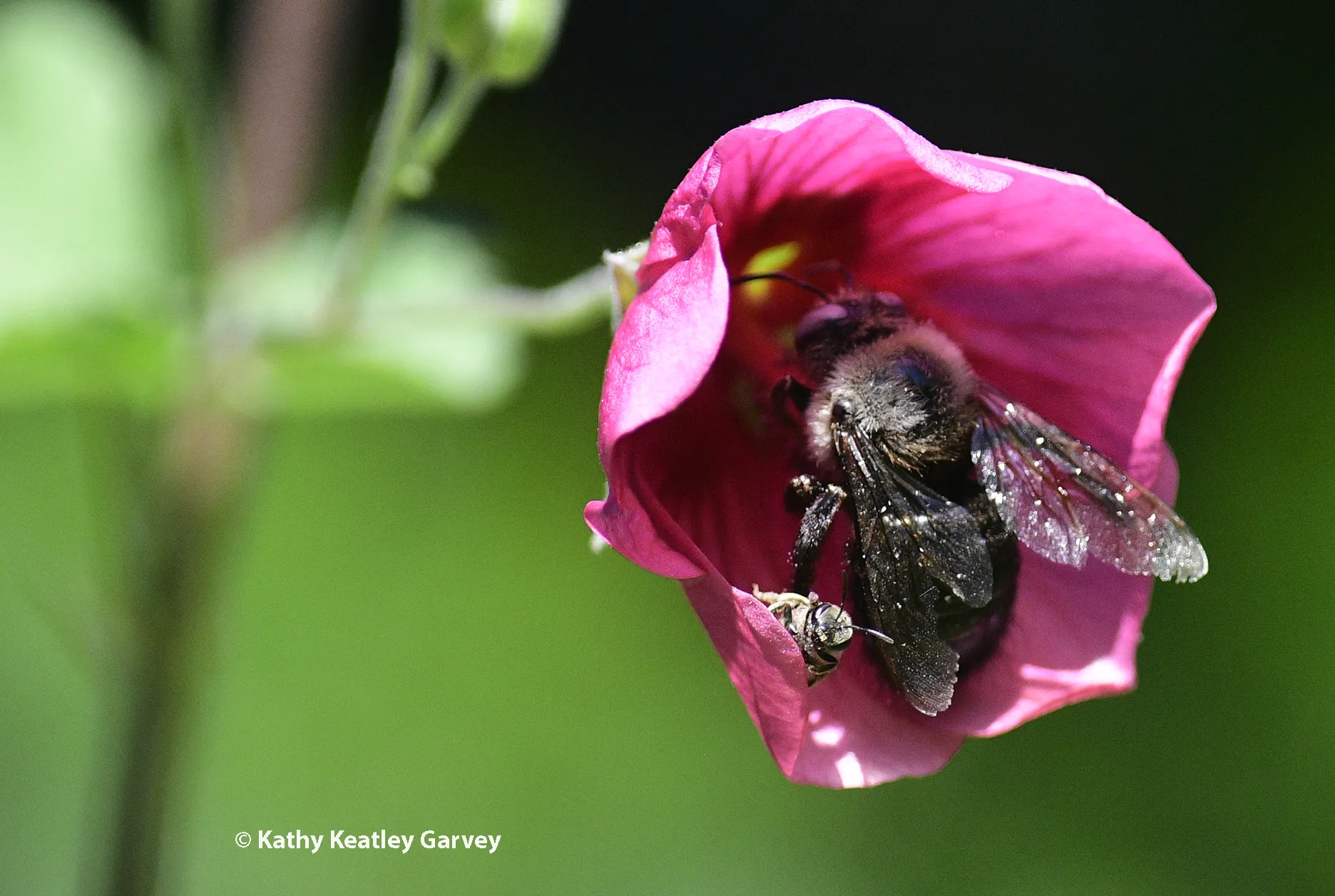



It's National Pollinator Month, the month to raise awareness about the importance of pollinators and their vital role in food production and in our ecosystems.
Take this male foothill carpenter bee, (Xylocopa tabaniformis orpifex).
We spotted it nectaring on mallow in a Vacaville garden on a warm June morning.
The nectar and pollen are all his. He is alone. All alone.
And then, suddenly, he's not. An intruder appears on the scene.
Should Mr. Carpenter Bee be concerned? As in, "no sweat"?
Well, sweat. Sort of. The intruder is a tiny sweat bee, family Halictidae.
The sweat bee, determined to find a seat at the breakfast table, tries to dart inside the blossom. It stops, reconsiders, and tries another route. It peers from the top of the blossom, and finally slides inside, right next to Big Boy Bee.
Mr. Carpenter Bee leaves to find another mallow.
This foothill carpenter bee is the smallest of California's three carpenter bee species. It's black, with males having bright yellow markings on their faces and yellow hairs on their thorax.
In addition to the foothill carpenter bee, California's species are:
- The Valley carpenter bee, Xylocopa sonorina, formerly X. varipuncta, the largest of the state's carpenter bees. It's about an inch long. The female is solid black, while the male, commonly known as "the teddy bear bee," is a green-eyed blond. Why teddy bear? It's fuzzy and does not sting--or as the late Robbin Thorp (1933-2019) distinguished emeritus professor of entomology at UC Davis, was fond of saying: "Boy bees don't sting."
- The California carpenter bee or Western carpenter bee, Xylocopa californica, is the second largest of the California carpenter bees. It's often found in the mountain foothill areas of northern and southern California. It's known for its distinctive distinctive bluish metallic reflections on the body, Thorp says. The females have dark smoky brown wings.
Happy National Pollinator Month.

